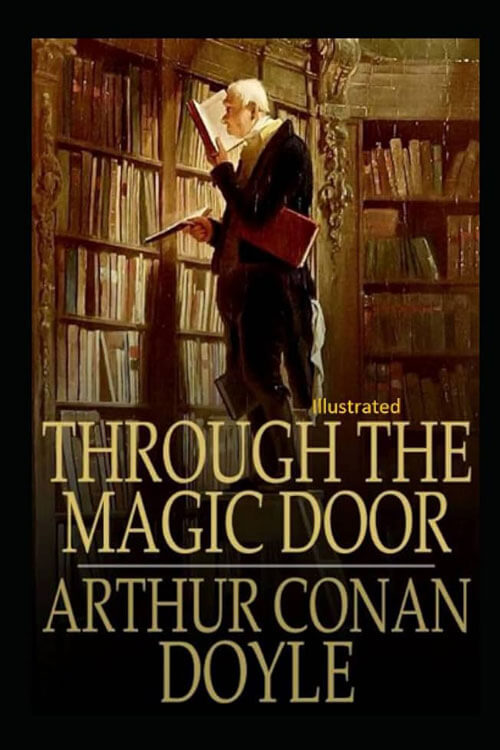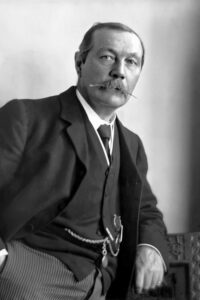
Through the Magic Door
This is justified by the facts overall. Some men are more significant than their work. Their work only represents one facet of their character, and there may be a dozen others, all remarkable and uniting to make one complex and unique creature. It was not so with Gibbon. He was a cold-blooded man with a brain that seemed to have grown at the expense of his heart. I cannot recall one generous impulse or ardent enthusiasm in his life, save for the Classics.
His excellent judgment was never clouded by the haze of human emotion—or, at least, it was such an emotion that was well under his will. Could anything be more laudable—or less lovable? He abandons his girl at his father’s order and sums it up that he “sighs as a lover but obeys as a son.” The father dies, and he records the fact with the remark that “the tears of a son are seldom lasting.” The terrible spectacle of the French Revolution excited in his mind only a feeling of self-pity because his retreat in Switzerland was invaded by the unhappy refugees, just as a grumpy country gentleman in England might complain that he was annoyed by the trippers.
Read or download Book
Arthur Conan Doyle
Sir Arthur Ignatius Conan Doyle KStJ, DL (22 May 1859 – 7 July 1930) was a British writer and physician.
Biography.
He created the character Sherlock Holmes in 1887 for A Study in Scarlet, the first of four novels and fifty-six short stories about Holmes and Dr. Watson. The Sherlock Holmes stories are milestones in the field of crime fiction.
Doyle was a prolific writer. In addition to Holmes’s stories, his works include fantasy and science fiction stories about Professor Challenger, humorous stories about the Napoleonic soldier Brigadier Gerard, and plays, romances, poetry, nonfiction, and historical novels. One of Doyle’s early short stories, “J. Habakuk Jephson’s Statement” (1884), helped popularise the mystery of Mary Celeste.
Early life
Doyle was born on 22 May 1859 at 11 Picardy Place, Edinburgh, Scotland. His father, Charles Altamont Doyle, was born in England and was of Irish Catholic descent, and his mother, Mary (née Foley), was Irish Catholic. His parents married in 1855. In 1864, the family scattered because of Charles’s growing alcoholism, and the children were temporarily housed across Edinburgh. Arthur lodged with Mary Burton, a friend’s aunt, at Liberton Bank House on Gilmerton Road while studying at Newington Academy.
1867, the family reunited and lived in squalid tenement flats at 3 Sciennes Place. Doyle’s father died in 1893 in the Crichton Royal, Dumfries, after many years of psychiatric illness. Beginning at an early age, Doyle wrote letters to his mother throughout his life, and many of them were preserved.
Supported by wealthy uncles, Doyle was sent to England to the Jesuit preparatory school Hodder Place, Stonyhurst in Lancashire, at the age of nine (1868–70). He then went on to Stonyhurst College, which he attended until 1875. While Doyle was not unhappy at Stonyhurst, he said he had no fond memories of it because the school was run on medieval principles: the subjects covered were rudiments, rhetoric, Euclidean geometry, algebra, and the classics. Doyle later commented that this academic system could only be excused “on the plea that any exercise, however stupid in itself, forms a sort of mental dumbbell by which one can improve one’s mind”. He also found the school harsh, noting that, instead of compassion and warmth, it favoured the threat of corporal punishment and ritual humiliation.
From 1875 to 1876, he was educated at the Jesuit school Stella Matutina in Feldkirch, Austria. His family decided that he would spend a year there to perfect his German and broaden his academic horizons. He later rejected the Catholic faith and became an agnostic. One source attributed his drift from religion to his time in the less strict Austrian school. He also later became a spiritualist mystic.
Literary career
Sherlock Holmes
Doyle struggled to find a publisher. His first work featuring Sherlock Holmes and Dr Watson, A Study in Scarlet, was written in three weeks when he was 27 and was accepted for publication by Ward Lock & Co on 20 November 1886, which gave Doyle £25 (equivalent to £2,900 in 2019) in exchange for all rights to the story. The piece appeared a year later in the Beeton’s Christmas Annual and received good reviews in The Scotsman and the Glasgow Herald.
Holmes was partially modelled on Doyle’s former university teacher, Joseph Bell. In 1892, in a letter to Bell, Doyle wrote, “It is most certainly to you that I owe Sherlock Holmes … round the centre of deduction and inference and observation which I have heard you inculcate I have tried to build up a man”, and in his 1924 autobiography, he remarked, “It is no wonder that after the study of such a character I used and amplified his methods when in later life I tried to build up a scientific detective who solved cases on his own merits and not through the folly of the criminal.” Robert Louis Stevenson was able to recognise the substantial similarity between Joseph Bell and Sherlock Holmes: “My compliments on your very ingenious and exciting adventures of Sherlock Holmes. … can this be my old friend Joe Bell?” Other authors sometimes suggest additional influences, such as Edgar Allan Poe’s character, C. Auguste Dupin, who is mentioned disparagingly by Holmes in A Study in Scarlet. Dr. (John) Watson owes his surname to a Portsmouth medical colleague of Doyle’s, Dr. James Watson, but not any other prominent characteristic.






